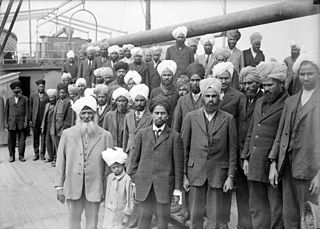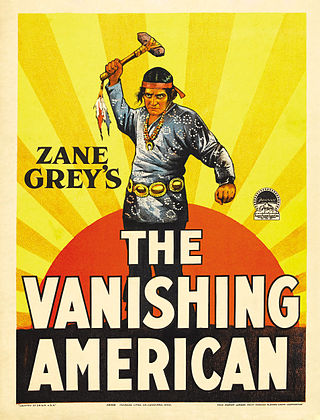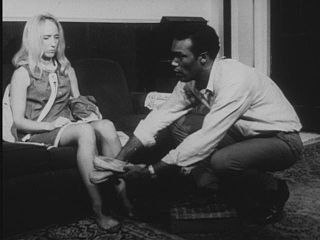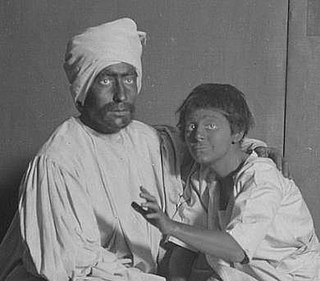
A stock character, also known as a character archetype, is a type of character in a narrative whom audiences recognize across many narratives or as part of a storytelling tradition or convention. There is a wide range of stock characters, covering people of various ages, social classes and demeanors. They are archetypal characters distinguished by their simplification and flatness. As a result, they tend to be easy targets for parody and to be criticized as clichés. The presence of a particular array of stock characters is a key component of many genres, and they often help to identify a genre or subgenre. For example, a story with the stock characters of a knight-errant and a witch is probably a fairy tale or fantasy.

Stereotypes of African Americans are misleading beliefs about the culture of people with partial or total ancestry from any black racial groups of Africa whose ancestors resided in the United States since before 1865, largely connected to the racism and the discrimination to which African Americans are subjected. These beliefs date back to the slavery of black people during the colonial era and they have evolved within American society.

Stereotypes of Indigenous peoples of Canada and the United States of America include many ethnic stereotypes found worldwide which include historical misrepresentations and the oversimplification of hundreds of Indigenous cultures. Negative stereotypes are associated with prejudice and discrimination that continue to affect the lives of Indigenous peoples.

Stereotypes of South Asians are broadly believed impressions about individuals of South Asian origin that are often inconsistent with reality. While the impressions are wrongly presumed to be universally true for all people of South Asian origin, these stereotypes adversely affect the South Asians as well as the acculturation process.
A poem known variously as the "Indian Wedding Blessing", "Apache Blessing", "Apache Wedding Prayer", "Benediction of the Apaches", "Cherokee Wedding Blessing", and with various forms, is commonly recited at weddings in the United States. The poem is of modern non-Native origin, and is fake folklore (fakelore).

Savita Bhabhi is an Indian fictional cartoon character, created by Kirtu Comics. The protagonist was promoted mainly through comics. It has since been converted into a subscription-based strip.

The word "how" is a pop culture anglicization of the Lakota word háu, a Lakota language greeting by men to men. The term how is often found in stereotypical and outdated depictions of Native Americans, made by non-Natives, in some Hollywood movies and various novels, e.g. those of James Fenimore Cooper or Karl May.
There are stereotypes of various groups of people which live within the United States and contribute to its culture. Worldwide, a disproportionately high number of people know about these stereotypes, due to the transmission of American culture and values via the exportation of American-made films and television shows.

The portrayal of Native Americans in television and films concerns indigenous roles in cinema, particularly their depiction in Hollywood productions. Especially in the Western genre, Native American stock characters can reflect contemporary and historical perceptions of Native Americans and the Wild West.

Playing Indian is a 1998 nonfiction book by Philip J. Deloria, which explores the history of the conflicted relationship white America has with Native American peoples. It explores the common historical and contemporary societal pattern of non-Natives simultaneously mimicking stereotypical ideas and imagery of "Indians" and "Indianness", in a quest for National identity in particular, while also denigrating, dismissing, and making invisible real, contemporary Indian people.
Racism in early American film is the negative depiction of racial groups, racial stereotypes, and racist ideals in classical Hollywood cinema from the 1910s to the 1960s.

The Vanishing American is a 1925 American silent Western film produced by Famous Players–Lasky and distributed through Paramount Pictures. The film was directed by George B. Seitz and starred Richard Dix and Lois Wilson, recently paired in several screen dramas by Paramount. The film is based on the 1925 novel The Vanishing American by Zane Grey. It was remade as a 1955 film starring Scott Brady and Audrey Totter.

A Signal of Peace is an 1890 bronze equestrian sculpture by Cyrus Edwin Dallin located in Lincoln Park, Chicago. Dallin created the work while studying in Paris and based the figure on a member of Buffalo Bill's Wild West Show, which he attended often. He exhibited the original plaster version of the sculpture at the Paris Salon of 1890, where it won honorable mention.

The watermelon stereotype is an anti-black racist trope originating in the Southern United States. It first arose as a backlash against African-American emancipation and economic sufficiency in the late 1860s.

Commando Duck is a Walt Disney anti-Japanese propaganda cartoon starring Donald Duck. It was released on June 2, 1944.
Project 562 is a photography project by Matika Wilbur, in which the artist is documenting and depicting at least one contemporary Native American person from each of the 562 currently recognized Tribal Nations in the United States.

Depictions of race in horror films has been the subject of commentary. Critics have discussed the representation of race in horror films in relation to the presence of racist ideas, stereotypes and tropes within them. The horror genre has conversely also been used to explore social issues including race, particularly following popularization of social thrillers in the 2010s.

Brownface is a social phenomenon in which a white or light-skinned person attempts to portray themselves as a "brown" person of color, but less overtly and with a lighter complexion than traditional blackface. This may include mimicry of Middle Eastern, North African, Southeast Asian, Melanesian, Micronesian, Polynesian, Hispanic/Latino, Native American or other Indigenous, Southern Italians, Sicilians, and/or South Asian ethnic identity by using makeup, hair-dye, and/or by wearing traditional ethnic clothing. It is typically defined as a racist phenomenon, similar to blackface.

Chief Chauncey Yellow Robe was a Sičhą́ǧú educator, lecturer, actor, and Native American activist. His given name, Canowicakte, means "kill in woods," and he was nicknamed "Timber" in his youth.
The Vanishing Indian or Vanishing Indian Myth is a stereotype regarding the depiction of Indigenous people, generally in the Americas, although the concept is found elsewhere as well, that they either are extinct or are destined to go extinct. This belief is so pervasive that in a survey done in 2018, around 40 percent of participants responded that they did not think Native Americans still existed.














